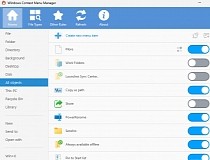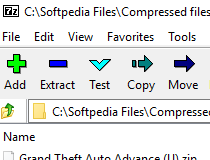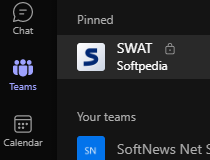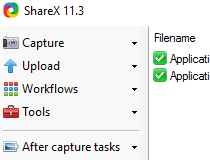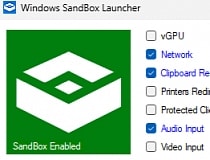The Wonder Shaper is a very special network shaper script with a lot of features.. #Network shaper #Low latency #Fast surfing #Wonder #Shaper #Low
The Wonder Shaper is a very special network shaper script with a lot of features. Works on Linux 2.4 & higher.
I attempted to create the holy grail:
* Maintain low latency for interfactive traffic at all times.
This means that downloading or uploading files should not disturb SSH or even telnet. These are the most important things, even 200ms latency is sluggish to work over.
* Allow 'surfing' at reasonable speeds while up or downloading
Even though http is 'bulk' traffic, other traffic should not drown it out too much.
* Make sure uploads don't harm downloads, and the other way around
This is a much observed phenomenon where upstream traffic simply destroys download speed. It turns out that all this is possible, at the cost of a tiny bit of bandwidth. The reason that uploads, downloads and ssh hurt eachother is the presence of large queues in many domestic access devices like cable or DSL modems.
ISPs know that they are benchmarked solely on how fast people can download. Besides available bandwidth, download speed is influenced heavily by packet loss, which seriously hampers TCP/IP performance. Large queues can help prevent packetloss, and speed up downloads. So ISPs configure large queues.
These large queues however damage interactivity. A keystroke must first travel the upstream queue, which may be seconds (!) long and go to your remote host. It is then displayed, which leads to a packet coming back, which must then traverse the downstream queue, located at your ISP, before it appears on your screen.
This HOWTO teaches you how to mangle and process the queue in many ways, but sadly, not all queues are accessible to us. The queue over at the ISP is completely off-limits, whereas the upstream queue probably lives inside your cable modem or DSL device. You may or may not be able to configure it. Most probably not.
What next? As we can't control either of those queues, they must be eliminated, and moved to your Linux router. Luckily this is possible.
By limiting our upload speed to slightly less than the truly available rate, no queues are built up in our modem. The queue is now moved to Linux.
This is slightly trickier as we can't really influence how fast the internet ships us data. We can however drop packets that are coming in too fast, which causes TCP/IP to slow down to just the rate we want. Because we don't want to drop traffic unnecessarily, we configure a 'burst' size we allow at higher speed.
Now, once we have done this, we have eliminated the downstream queue totally (except for short bursts), and gain the ability to manage the upstream queue with all the power Linux offers.
What remains to be done is to make sure interactive traffic jumps to the front of the upstream queue. To make sure that uploads don't hurt downloads, we also move ACK packets to the front of the queue. This is what normally causes the huge slowdown observed when generating bulk traffic both ways. The ACKnowledgements for downstream traffic must compete with upstream traffic, and get delayed in the process.
We also move other small packets to the front of the queue - this helps operating systems which do not set TOS bits, like everything from Microsoft.
Sometimes you may notice low priority OUTGOING traffic slowing down important traffic. In that case, the following options may help you:
NOPRIOHOSTSRC Set this to hosts or netmasks in your network that should have low priority
NOPRIOHOSTDST Set this to hosts or netmasks on the internet that should have low priority
NOPRIOPORTSRC Set this to source ports that should have low priority. If you have an unimportant webserver on your traffic, set this to 80
NOPRIOPORTDST Set this to destination ports that should have low priority.
See the start of wshaper and wshaper.htb
If we do all this we get the following measurements using an excellent ADSL connection from xs4all in the Netherlands:
Baseline latency: round-trip min/avg/max = 14.4/17.1/21.7 ms
Without traffic conditioner, while downloading: round-trip min/avg/max = 560.9/573.6/586.4 ms
Without traffic conditioner, while uploading: round-trip min/avg/max = 2041.4/2332.1/2427.6 ms
With conditioner, during 220kbit/s upload: round-trip min/avg/max = 15.7/51.8/79.9 ms
With conditioner, during 850kbit/s download: round-trip min/avg/max = 20.4/46.9/74.0 ms
When uploading, downloads proceed at ~80% of the available speed. Uploads at around 90%. Latency then jumps to 850 ms, still figuring out why.
What you can expect from this script depends a lot on your actual uplink speed. When uploading at full speed, there will always be a single packet ahead of your keystroke. That is the lower limit to the latency you can achieve - divide your MTU by your upstream speed to calculate. Typical values will be somewhat higher than that. Lower your MTU for better effects!
Uplink speed | Expected latency due to upload -------------------------------------------------- 32 | 234ms 64 | 117ms 128 | 58ms 256 | 29ms
So to calculate your effective latency, take a baseline measurement (ping on an unloaded link), and look up the number in the table, and add it. That is about the best you can expect. This number comes from a calculation that assumes that your upstream keystroke will have at most half a full sized packet ahead of it.
mtu * 0.5 * 10 -------------- + baseline_latency kbit
The factor 10 is not quite correct but works well in practice.
If you run a recent distribution, everything should be ok. You need 2.4 with QoS options turned on.
If you compile your own kernel, it must have some options enabled. Most notably, in the Networking Options menu, QoS and/or Fair Queueing, turn at least CBQ, PRIO, SFQ, Ingress, Traffic Policing, QoS support, Rate Estimator, QoS classifier, U32 classifier, fwmark classifier.
In practice, I (and most distributions) just turn on everything.
The script comes in two versions, one which works on standard kernels and is implemented using CBQ. The other one uses the excellent HTB qdisc which is not in the default kernel. The CBQ version is more tested than the HTB one!
See 'wshaper' and 'wshaper.htb'.
These scripts need to know the 'real' rate of your ISP connection. This is hard to determine upfront as different ISPs use different kinds of bits it appears. People report success using the following technique:
Estimate both your upstream and downstream at half the rate your ISP specifies. Now verify if the script is functioning - check interactivity while uploading and while downloading. This should deliver the latency as calculated above. If not, check if the script executed without errors.
Now slowly increase the upstream & downstream numbers in the script until the latency comes back. This way you can find optimum values for your connection. If you are happy, please report to me so I can make a list of numbers that work well. Please let me know which ISP you use and the name of your subscription, and its reputed specifications, so I can list you here and save others the trouble.
If you dial in, you can copy the script to /etc/ppp/ip-up.d and it will be run at each connect.
If you want to remove the shaper from an interface, run 'wshaper stop'. To see status information, run 'wshaper status'.
If you get errors, add an -x to the first line, as follows:
#!/bin/bash -x
And retry. This will show you which line gives an error. Before contacting me, make sure that you are running a recent version of iproute!
Recent versions can be found at your Linux distributor, or if you prefer compiling, here: ftp://ftp.inr.ac.ru/ip-routing/iproute2-current.tar.gz
The Wonder Shaper 1.1a
add to watchlist add to download basket send us an update REPORT- runs on:
- Linux
- filename:
- wondershaper-1.1a.tar.gz
- main category:
- System
- developer:
- visit homepage
Context Menu Manager 3.3.3.1
7-Zip 23.01 / 24.04 Beta
Microsoft Teams 24060.3102.2733.5911 Home / 1.7.00.7956 Work
Zoom Client 6.0.3.37634
Bitdefender Antivirus Free 27.0.35.146
4k Video Downloader 1.5.3.0080 Plus / 4.30.0.5655
IrfanView 4.67
ShareX 16.0.1
calibre 7.9.0
Windows Sandbox Launcher 1.0.0
- ShareX
- calibre
- Windows Sandbox Launcher
- Context Menu Manager
- 7-Zip
- Microsoft Teams
- Zoom Client
- Bitdefender Antivirus Free
- 4k Video Downloader
- IrfanView
